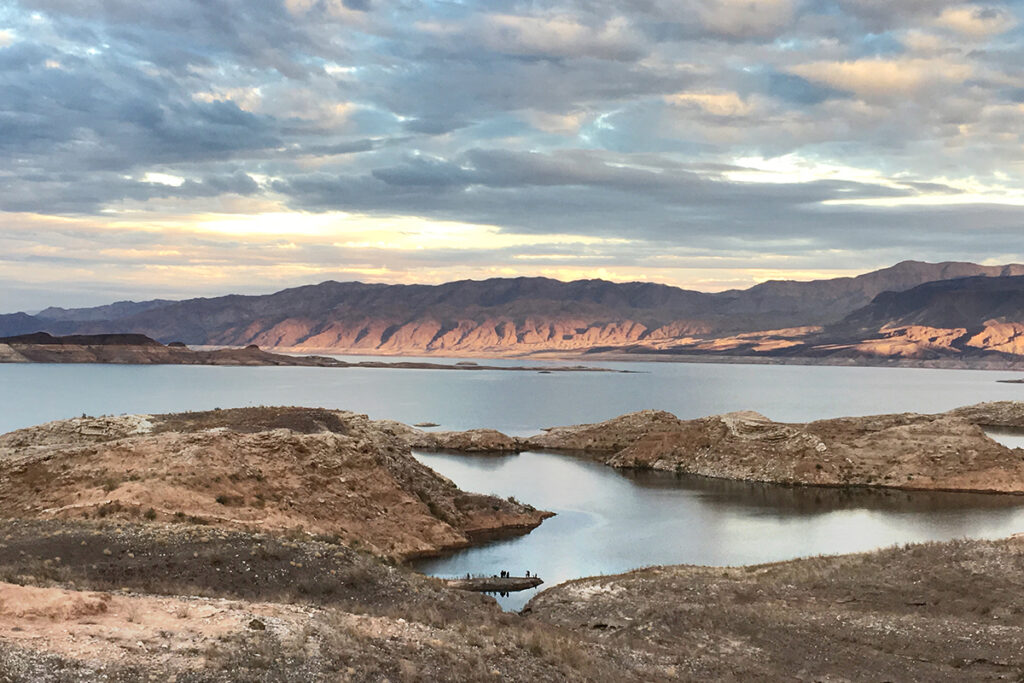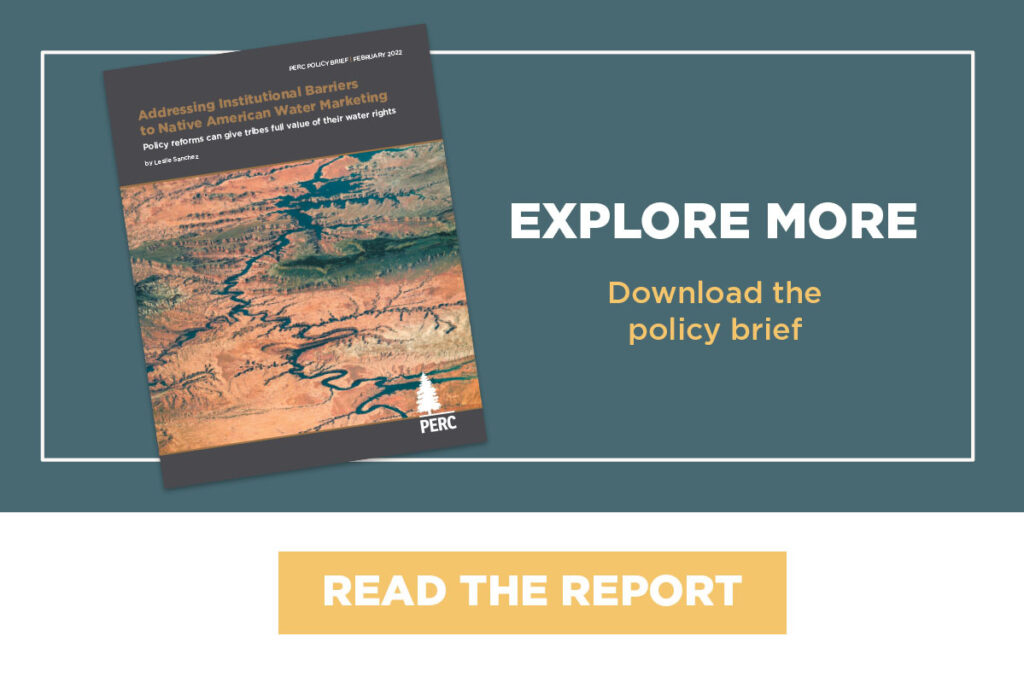This policy brief is part of a volume entitled “The Future of Water Markets: Obstacles and Opportunities,” published by PERC, which addresses timely water policy issues and offers ideas to enhance the future of water markets.
On August 16, 2021, the federal government declared the first-ever shortage on the Colorado River, as measured at the Lake Mead reservoir, triggering cuts to water users in Arizona, Nevada, and Mexico. While the declaration underscores the severity of water scarcity in the basin, it was not unexpected. Lake Mead’s elevation has hovered around the 1,075-foot threshold for a “Tier 1” shortage for years, and maintaining even that level has required water marketing agreements with Native American tribes.
In recent years, the Gila River Indian Community and Colorado River Indian Tribes have helped maintain Lake Mead’s water levels above the curtailment threshold by entering into leasing and forbearance agreements with federal agencies, states, and municipal governments in the Lower Colorado River Basin. In exchange for banking water rights in Lake Mead, the two tribes received millions of dollars in revenue—more than they would have generated through on-reservation water use—which they have reinvested in more efficient water infrastructure and reservation economies. Meanwhile, off-reservation water users staved off costly, mandatory cuts from the federally declared shortage.
“The potential influence of Native American tribes over water markets and trajectories of future water use cannot be overstated.”
The combination of regional water scarcity and mandatory reductions in water use has amplified the need for water markets to encourage conservation and redirect water to its highest-value uses. With some of the most extensive and senior water rights in the West, the potential influence of Native American tribes over water markets and trajectories of future water use cannot be overstated. The Colorado River Basin’s 29 federally recognized tribes hold combined rights to 3.6 million acre-feet (AF) of water, or roughly 25 percent of the Colorado River’s annual flow. This share could increase by up to 0.5 million AF as remaining basin tribes settle their water rights—just as off-reservation water users face additional curtailments.
Despite clear benefits of tribes marketing water to off-reservation users, federal law severely restricts them from doing so. Tribes are prohibited from marketing water off reservation without ad hoc authorization from Congress. Even then, additional barriers limit how tribes can market water. These obstacles to water marketing reduce potential gains from trade, deprive tribes of significant revenues and decision-making power, generate uncertainty for other water users, and entrench water use in relatively low-value, low-efficiency activities. Reforms that remove such barriers would not only give tribes the autonomy they deserve when it comes to their water rights, but they would also benefit the tribes and off-reservation water users who participate in water marketing.
Highlights
- Despite the clear mutual benefits of water marketing between tribes and off-reservation water users, federal law severely restricts tribes from marketing their water rights.
- Because of these restrictions, Colorado River Basin tribes may be forgoing $563 million to $1.3 billion annually, or between $3,200 and $7,300 per person residing on the corresponding reservations.
- Authorizing tribes to lease water off reservation would enable tribes to capture the full value of their water rights, enhance water management flexibility through expanded market activity, and improve regional resiliency to protracted drought and growing water demand.
Recommendations
- Congress should pass legislation to uniformly authorize tribes to lease water rights off reservation if they choose to do so.
- Contingent on tribal support, water settlements should include financial and administrative support for tribes to develop water markets.






